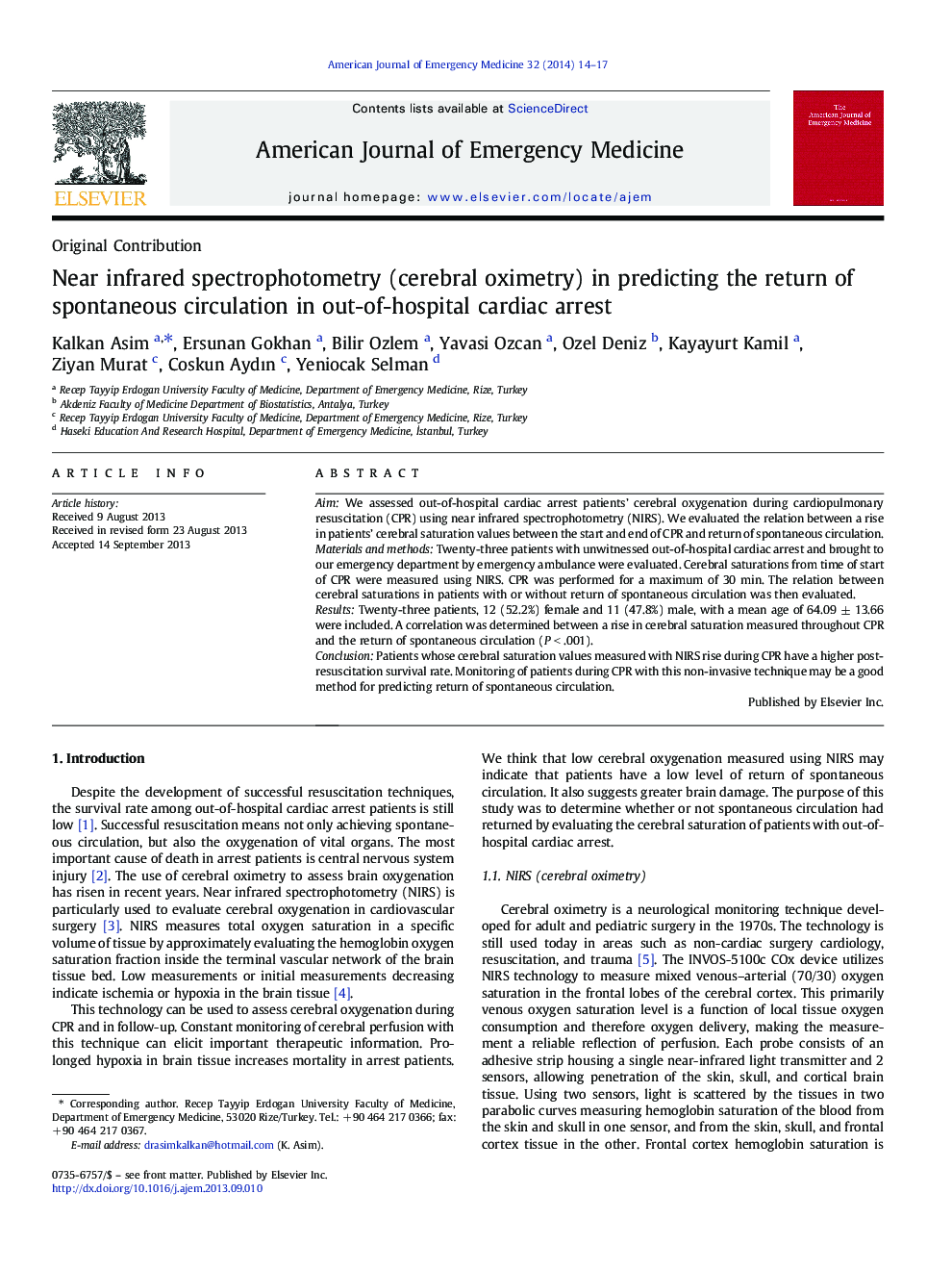| Article ID | Journal | Published Year | Pages | File Type |
|---|---|---|---|---|
| 3224012 | The American Journal of Emergency Medicine | 2014 | 4 Pages |
AimWe assessed out-of-hospital cardiac arrest patients’ cerebral oxygenation during cardiopulmonary resuscitation (CPR) using near infrared spectrophotometry (NIRS). We evaluated the relation between a rise in patients’ cerebral saturation values between the start and end of CPR and return of spontaneous circulation.Materials and methodsTwenty-three patients with unwitnessed out-of-hospital cardiac arrest and brought to our emergency department by emergency ambulance were evaluated. Cerebral saturations from time of start of CPR were measured using NIRS. CPR was performed for a maximum of 30 min. The relation between cerebral saturations in patients with or without return of spontaneous circulation was then evaluated.ResultsTwenty-three patients, 12 (52.2%) female and 11 (47.8%) male, with a mean age of 64.09 ± 13.66 were included. A correlation was determined between a rise in cerebral saturation measured throughout CPR and the return of spontaneous circulation (P < .001).ConclusionPatients whose cerebral saturation values measured with NIRS rise during CPR have a higher post-resuscitation survival rate. Monitoring of patients during CPR with this non-invasive technique may be a good method for predicting return of spontaneous circulation.
